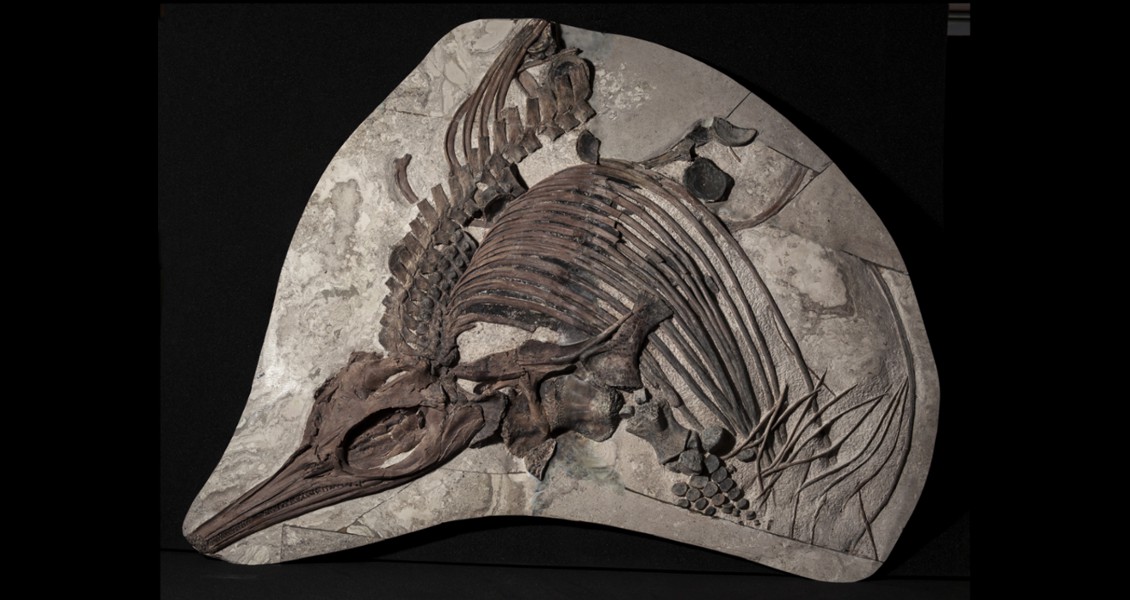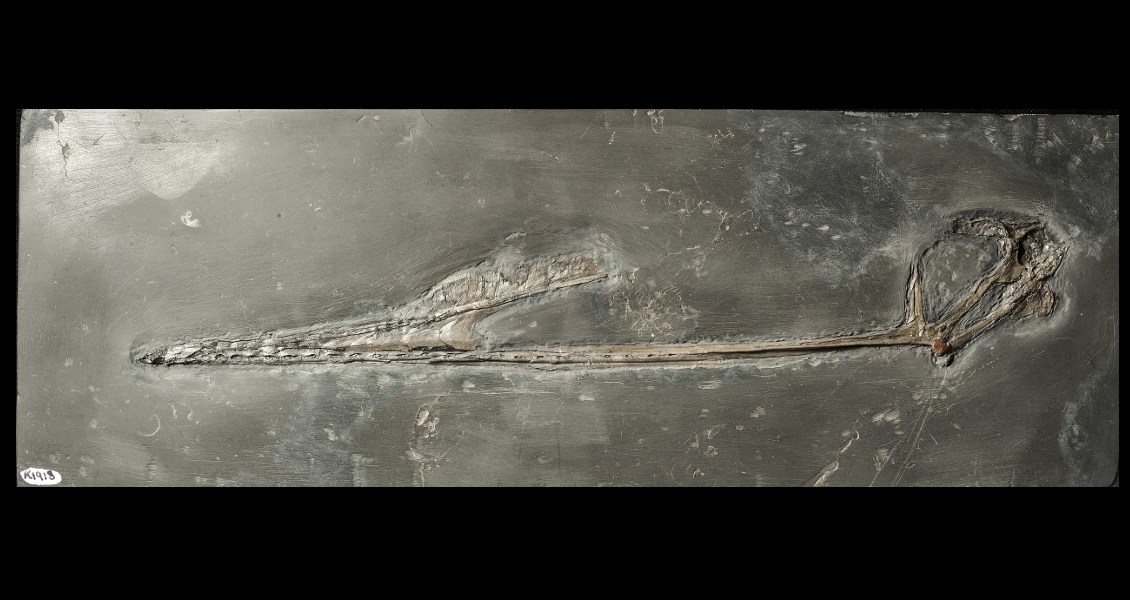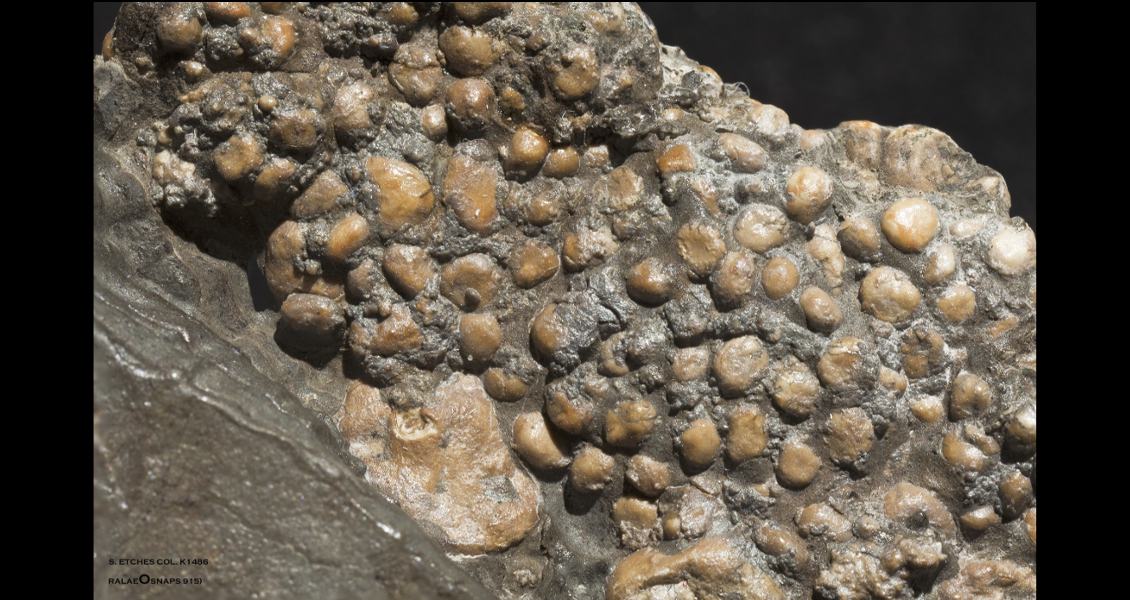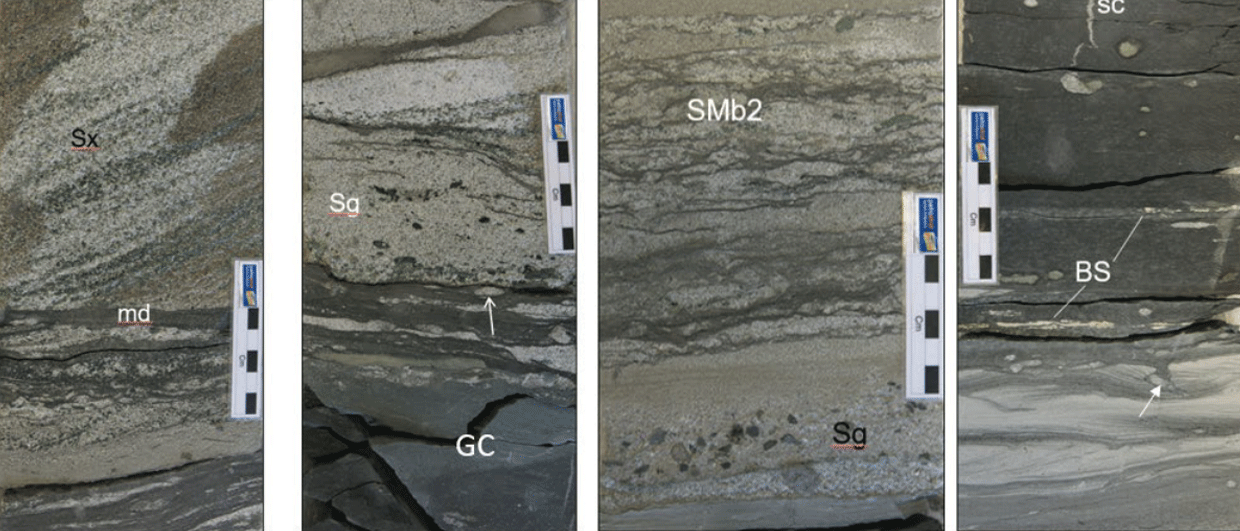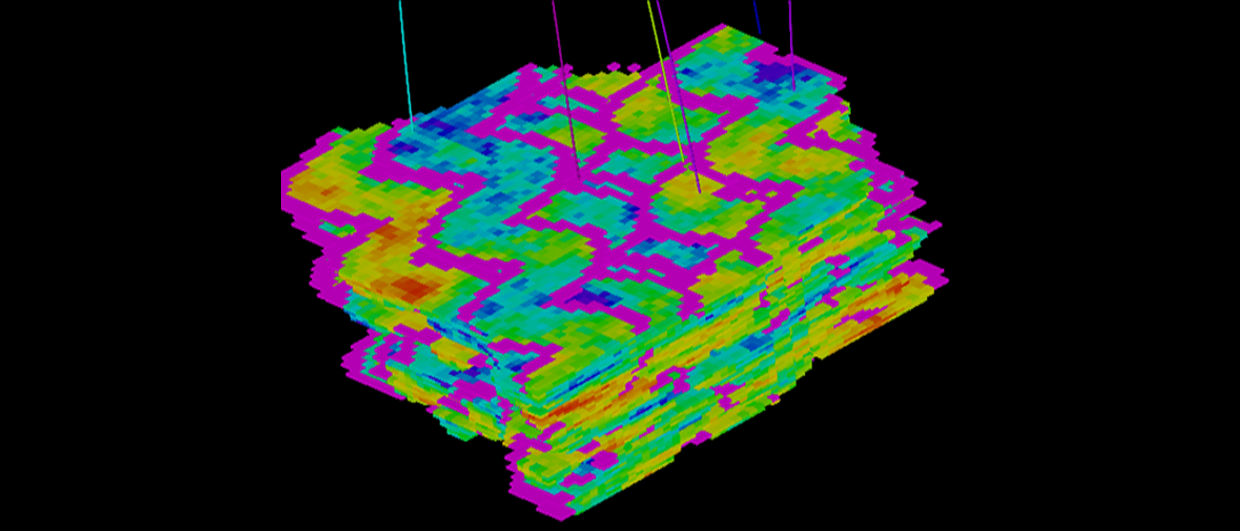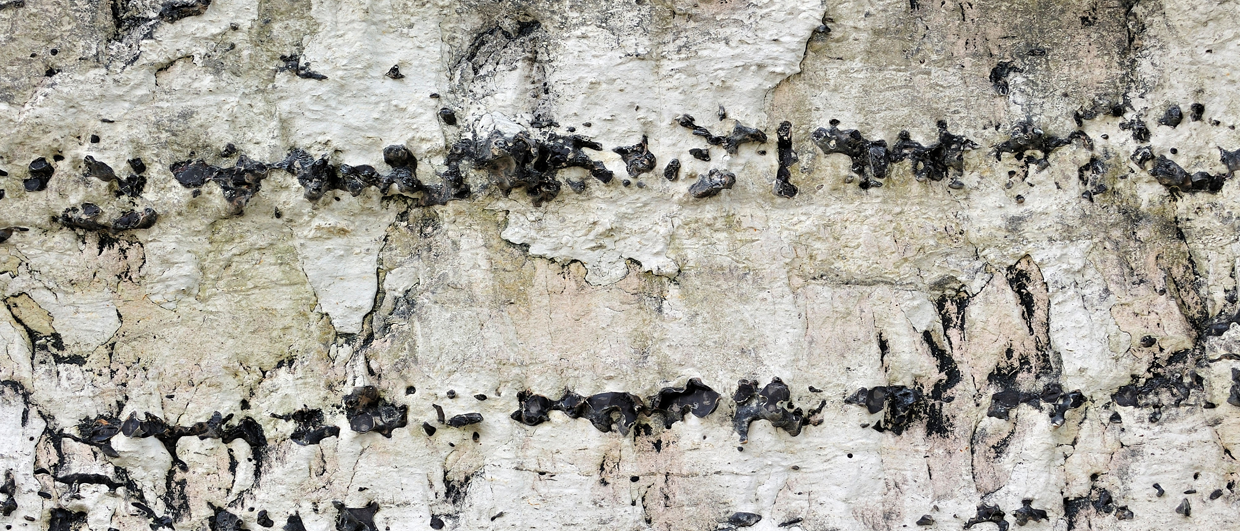Steve Etches is a man with a passion – and a very crowded garage.
Born in the county of Dorset in southern England, not so many miles from the world-famous Jurassic coast, Steve found his first echinoid fossil at the age of five, but it was not until he had a family of his own that he began to think a little more about the treasure which lay beneath his feet.
“I had no formal academic training in geology – I owned a heating and plumbing company – but thought that fossil hunting would be a great family hobby,” he explains. “But I got hooked far more than they did! Dorset is just so rich in fossils; I very soon started collecting.”
Unrivalled Collection
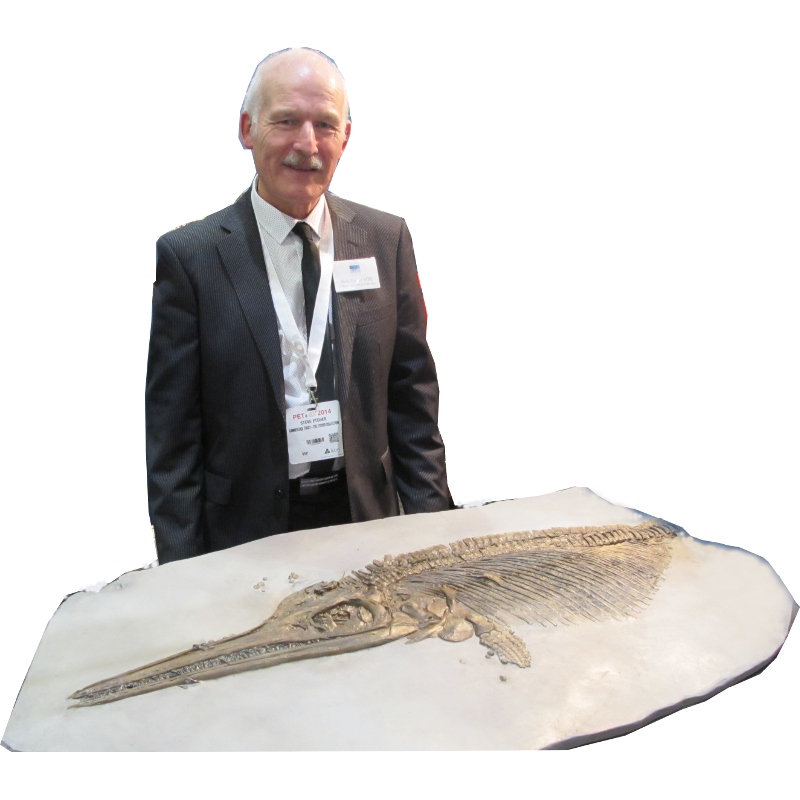 Steve Etches and one of his best discoveries – a fully articulated ichthyosaur, its final meal of fish and squid visible within the ribcage. (Source: Jane Whaley)Now a World Heritage Site, the Jurassic Coast extends for about 130 km, and has the greatest succession of exposed Jurassic rocks in the world. Geologists and palaeontologists have flooded to the area since the early nineteenth century. But Steve realised that there was one formation that did not get as much attention as the others – the Kimmeridge Clay, well known to the oil and gas industry as the richest source rock in the North Sea and approximately 530 metres thick in Dorset.
Steve Etches and one of his best discoveries – a fully articulated ichthyosaur, its final meal of fish and squid visible within the ribcage. (Source: Jane Whaley)Now a World Heritage Site, the Jurassic Coast extends for about 130 km, and has the greatest succession of exposed Jurassic rocks in the world. Geologists and palaeontologists have flooded to the area since the early nineteenth century. But Steve realised that there was one formation that did not get as much attention as the others – the Kimmeridge Clay, well known to the oil and gas industry as the richest source rock in the North Sea and approximately 530 metres thick in Dorset.
“The Kimmeridge Clay has been described as ‘the most uninteresting rock for fossil collecting in the Jurassic’, because more often than not, fossils that were found were crushed and distorted, therefore interest in that formation was not as great as other stratas of the Jurassic period,” Steve says. “However, although some fossils have been flattened, and are therefore hard to collect, the fine clay often means the fossils are well preserved, some even with soft part preservation.”
Over the last 35 years, Steve has amassed an unrivalled collection of over 2,000 Late Jurassic specimens, including the world’s first ammonite eggs, the first pterosaur skull from the Kimmeridge clay of Britain, the largest collection of pterosaur remains, and a Kimmerigian fish collection, recognised by the Natural History Museum as being the most diverse. Steve is an excellent and painstaking fossil preparator, taking many hundreds of hours to clean some of the fossil specimens.
A Permanent Home
Having accumulated this amazing collection, Steve had a problem. “I set up a display in my garage, gradually overflowing into the living room, then the dining room. They needed a new home. The collection was attracting interest from the academic community. I love discussing the collection with them and have been lucky enough to work with some excellent geologists. But lack of space means that the collection is not currently housed together and viewings can only be made by appointment.”
In 1998 PESGB led a field trip of their delegates to the Dorset coast, and as part of that visit they came to view the collection in Kimmeridge. From this visit PESGB were enthralled with the collection and keen to contribute funding to create a permanent home and museum for the fossils.
“Five years ago they gave me £60,000 to formulate plans, enabling us to set up a board of trustees and prepare a website, pamphlets and other material needed to raise the serious money required to build a purposebuilt museum and education centre,” continues Steve. “Much to our delight, we were awarded about £2.7 million by the Heritage Lottery Fund (HLF). With hard work from the Kimmeridge Trust (the charity set up to raise additional and ongoing funds for the collection) we have matched the HLF grant with funding from Trusts and private sponsors, including further support from PESGB, and the museum is about to become a reality. Building starts early this year and we hope to welcome the first visitors in early 2016.”
The Etches Collection will be situated very appropriately in the village of Kimmeridge on the Dorset coast. As well as housing his amazing collection, which Steve has gifted to the museum, the Etches Collection will include educational and research areas, as well as a workshop where visitors can learn about the painstaking processes involved in cleaning and preserving fossil specimens.
A fitting home for such a unique and important collection, and a fine tribute to an amateur palaeontologist who has always sought to advance science and his own knowledge through his passion.



